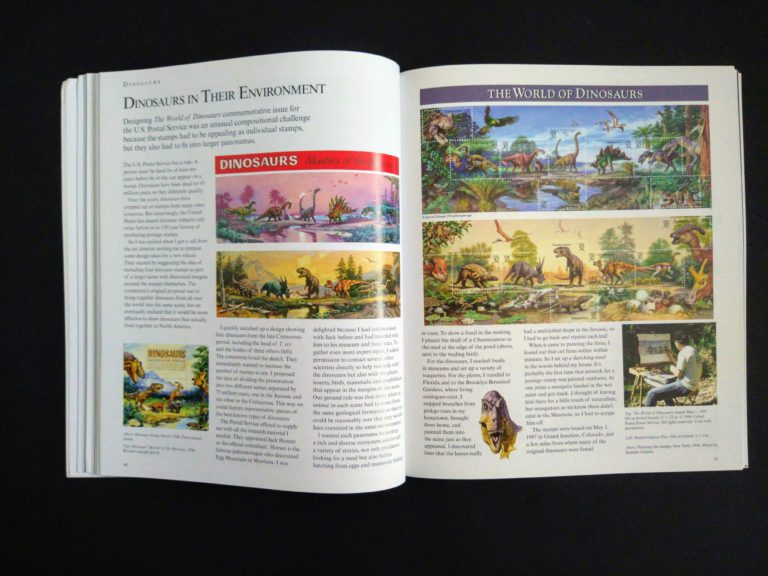
Where traditional descriptors are lacking, Gurney has invented his own vocabulary to identify various approaches to composition. He discusses the importance of tonal relationships in composition, supporting this discussion with many beautiful, well-annotated illustrations.

In addition to describing techniques for creating environments from the imagination, Gurney devotes a chapter of his book to compositional devices. He also describes the value of photographic references in his work, but warns against the pitfalls associated with relying too heavily upon them, providing great examples to illustrate his point.

Carefully lit maquettes provide invaluable information about the subtleties of light and shadow. It’s his attention to detail during these preliminary stages that make his illustrations so convincingly realistic. In particular Gurney’s architectural models are very impressive. Many of Gurney’s examples are drawn from his weblog () in which he generously shares his experiences as an illustrator. He begins by situating his work within the tradition of imaginative painting, paying homage to the great masters, and highlighting the practice of copying from the masters, which he describes as “the shortest path to understanding.” He devotes a large portion of the book to explaining his process of sketching, shooting photographic references, and creating maquettes, describing the role of each in informing his final paintings. The book is divided into 13 chapters in which Gurney systematically breaks down his illustrative process. In Imaginative Realism, Gurney describes many of the techniques explored in illustrating the Dinotopia series, as well as a number of commissioned works. In this book Gurney shares with the reader his years of experience exercising those imaginative muscles in the design of imaginary creatures, places, and events.Īn award-winning author and illustrator, James Gurney is perhaps best known for the book series Dinotopia, in which he has beautifully conceived, in painstaking detail, a world shared by humans and dinosaurs. I liked to sketch from observation, but I couldn’t find many books that explained how to develop my imaginative muscles.” This sentiment will ring true for those of us who have struggled with the convincing depiction of things we cannot see. In the introduction to Imaginative Realism, James Gurney writes, “This problem (of drawing from imagination) always puzzled me as a young artist.

Imaginative Realism: How to Paint What Doesn't Exist by James Gurney.Īndrews McMeel Publishing, 2009, 224 pages. Book Cover - Imaginative Realism: How to Paint What Doesn't Exist by James Gurney.įigure 2.


 0 kommentar(er)
0 kommentar(er)
